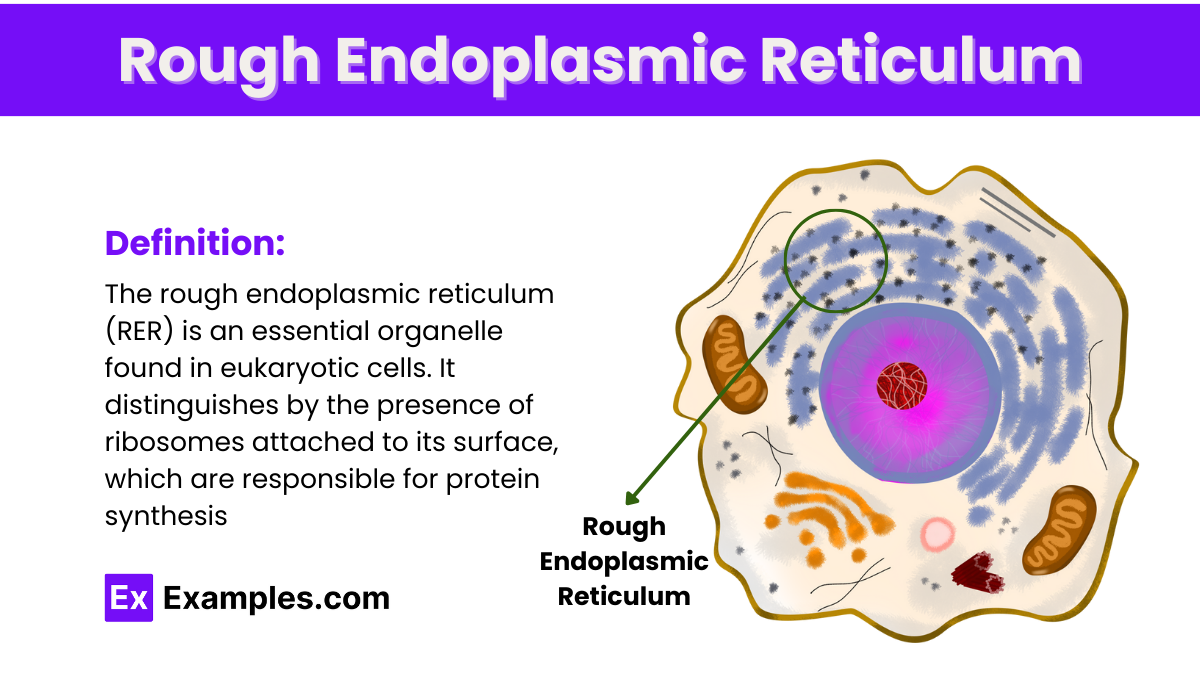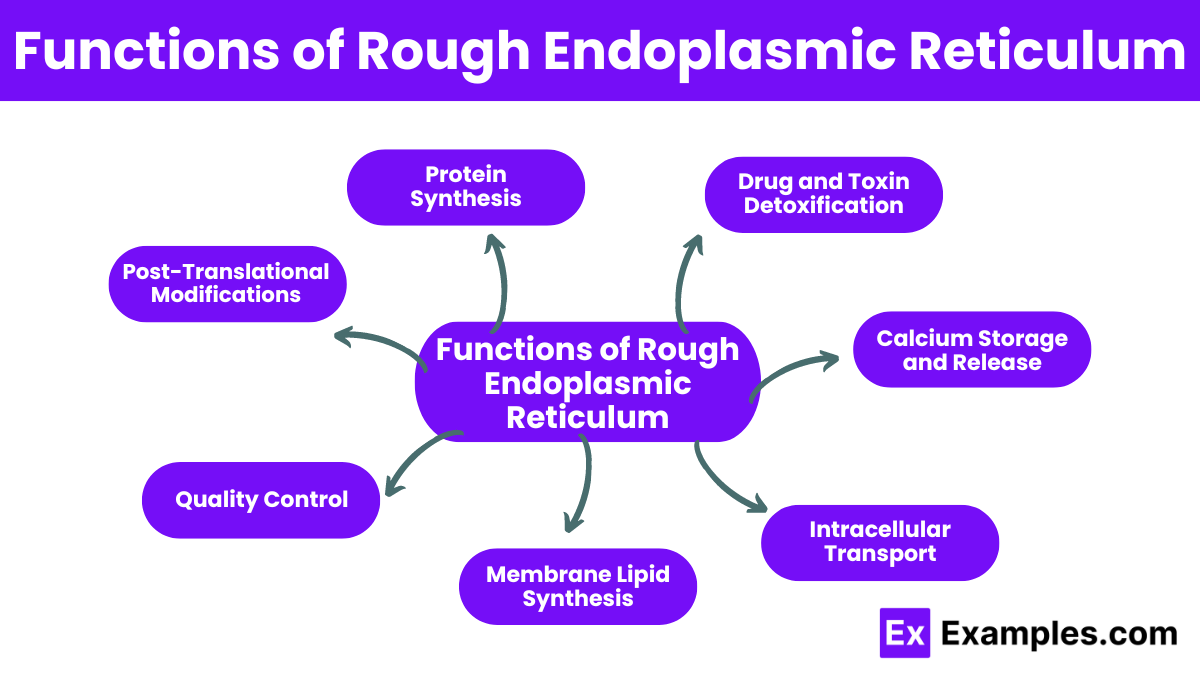Which of the following best describes the function of the rough endoplasmic reticulum (RER)?
Lipid synthesis
Protein synthesis
DNA replication
Photosynthesis


The rough endoplasmic reticulum (RER) stands out as a pivotal cellular structure in both protein synthesis and distribution. Residing within the cytoplasm, the RER is especially notable for its surface studded with ribosomes, which gives it a characteristic “rough” appearance under a microscope. This organelle plays a crucial role not only in the synthesis of proteins destined for secretion but also in their folding and quality control. The RER’s strategic interactions with the ribosomes enable the efficient targeting and modification of newly synthesized peptides, making it indispensable for maintaining cellular function and health.
The endoplasmic reticulum (ER) is a critical organelle in eukaryotic cells, serving as a central hub for both biosynthesis and transport. Structurally, it forms an interconnected network of tubules and sac-like structures known as cisternae, sprawling throughout the cytoplasm. The ER is versatile, playing several vital roles within the cell.
The rough endoplasmic reticulum (RER) is an essential organelle found in eukaryotic cells. It distinguishes itself from the smooth endoplasmic reticulum by the presence of ribosomes attached to its surface, which are responsible for protein synthesis. The RER’s primary function involves the translation, folding, and modification of proteins that are destined either for secretion out of the cell or for use in various cellular membranes.
The rough endoplasmic reticulum (RER) is a pivotal organelle in the cell, characterized by its unique structure and essential functions. Here are the key characteristics of the rough endoplasmic reticulum:
The RER consists of a series of interconnected, flattened sacs called cisternae. These membranous structures are extensive and convoluted, extending from the outer nuclear membrane into the cytoplasm. The membrane of the RER is phospholipid bilayer, embedded with proteins that perform or regulate its functions.
Attached to the outer surface of the RER membrane are ribosomes, which are the sites of protein synthesis. These ribosomes are either bound to the membrane or free in the cytoplasm, but it is the membrane-bound ribosomes that give the RER its rough appearance. The ribosomes assemble amino acids into protein chains, which then pass into the lumen of the RER for further processing.
The interior space of the RER is known as the lumen or cisternal space. This is where newly synthesized proteins undergo folding and post-translational modifications, such as glycosylation—the addition of carbohydrate groups to the protein. The environment within the lumen facilitates the correct folding of proteins, aided by molecular chaperones.
Numerous enzymes and molecular chaperones reside within the RER lumen, assisting in the modification and proper folding of proteins. These molecules are crucial for maintaining the quality control of synthesized proteins, ensuring that only correctly folded proteins are sent to their next destinations, such as the Golgi apparatus.
The RER is physically and functionally connected to the nuclear envelope, which surrounds the nucleus. This connection allows for the direct insertion of certain types of proteins into the RER from the nucleus. Additionally, the RER is closely linked to the smooth endoplasmic reticulum (SER), where more specialized functions such as lipid synthesis and detoxification occur. Transitions between the rough and smooth regions are seamless, reflecting the dynamic nature of the ER based on cellular needs.

In plant cells, the RER is involved in the synthesis of:
In plant cells, the rough endoplasmic reticulum is typically located near the nucleus, which facilitates the efficient transport of mRNA from the nucleus to the ribosomes on the RER. The structure of the RER is a network of membranous tubules and flattened sacs. The ribosomes attached to the RER are sites where the cell’s proteins are synthesized.
The primary function of the RER in plant cells is to synthesize proteins. These proteins undergo folding and modification, such as the addition of sugar groups, within the RER. This process is known as glycosylation, which is crucial for the stability and functionality of proteins.
The RER is also responsible for the production of phospholipids and other components of cellular membranes. This function is essential for the growth and maintenance of the cell’s various organelles.
The RER works closely with the Golgi apparatus, another cell organelle. Proteins synthesized in the RER are packaged into vesicles and sent to the Golgi apparatus for further processing and sorting. This coordinated workflow ensures that proteins reach their correct destinations, whether within the cell or for export.
The rough endoplasmic reticulum is indispensable in plants. It supports various functions, from growth and development to the production of defensive compounds against pests. The proteins and enzymes synthesized by the RER are fundamental in:
The RER is an interconnected network of membranous sacs and tubules. Its structure is pivotal for its function. The ribosomes, which are small complexes of RNA and protein, are attached to the cytoplasmic side of the RER’s membrane. These ribosomes are the sites of protein synthesis. The newly synthesized proteins are translocated into the lumen of the RER, where they undergo folding and modifications.
In animal cells, the rough endoplasmic reticulum is particularly significant in cells that are responsible for producing large amounts of proteins for secretion. For instance, plasma cells and other immune cells rely heavily on the RER for the production of antibodies. Additionally, the RER is vital in liver cells for the production of plasma proteins and detoxification enzymes.
The formation of the rough endoplasmic reticulum can be understood through several key steps:
The primary function of the rough endoplasmic reticulum (RER) is to synthesize and process proteins destined for secretion or membrane use.
The smooth ER lacks ribosomes and focuses on lipid and carbohydrate metabolism, while the rough ER has ribosomes for protein synthesis.
The endoplasmic reticulum is a cell organelle that synthesizes proteins and lipids, and regulates calcium levels, vital for various cellular processes.
The rough endoplasmic reticulum synthesizes membrane-bound and secretory proteins, and conducts their initial folding and modification.
Text prompt
Add Tone
10 Examples of Public speaking
20 Examples of Gas lighting
Which of the following best describes the function of the rough endoplasmic reticulum (RER)?
Lipid synthesis
Protein synthesis
DNA replication
Photosynthesis
The rough endoplasmic reticulum is called "rough" because:
It has a smooth surface
It is covered with ribosomes
It has a rough texture
It contains enzymes for lipid metabolism
Ribosomes attached to the rough endoplasmic reticulum primarily synthesize:
Cytosolic proteins
Membrane-bound proteins
Lipids
Carbohydrates
Where is the rough endoplasmic reticulum most abundant in the cell?
Muscle cells
Neurons
Pancreatic cells
Red blood cells
The rough endoplasmic reticulum is connected to which other cellular organelle?
Mitochondria
Golgi apparatus
Nucleus
Lysosome
Proteins synthesized on the rough endoplasmic reticulum are typically destined for:
The nucleus
The cytosol
The extracellular space
The mitochondria
Which of the following is NOT a function of the rough endoplasmic reticulum?
Protein folding
Protein modification
Protein transport
Lipid synthesis
In a cell, the rough endoplasmic reticulum is primarily involved in the synthesis of:
Steroids
Glycoproteins
Phospholipids
DNA
What distinguishes the rough endoplasmic reticulum from the smooth endoplasmic reticulum?
Presence of mitochondria
Presence of ribosomes
Ability to synthesize carbohydrates
Lack of a membrane
The main difference between proteins synthesized by free ribosomes and those synthesized by ribosomes on the rough endoplasmic reticulum is:
Their amino acid sequence
Their final destination
Their molecular weight
Their solubility in water
Before you leave, take our quick quiz to enhance your learning!

